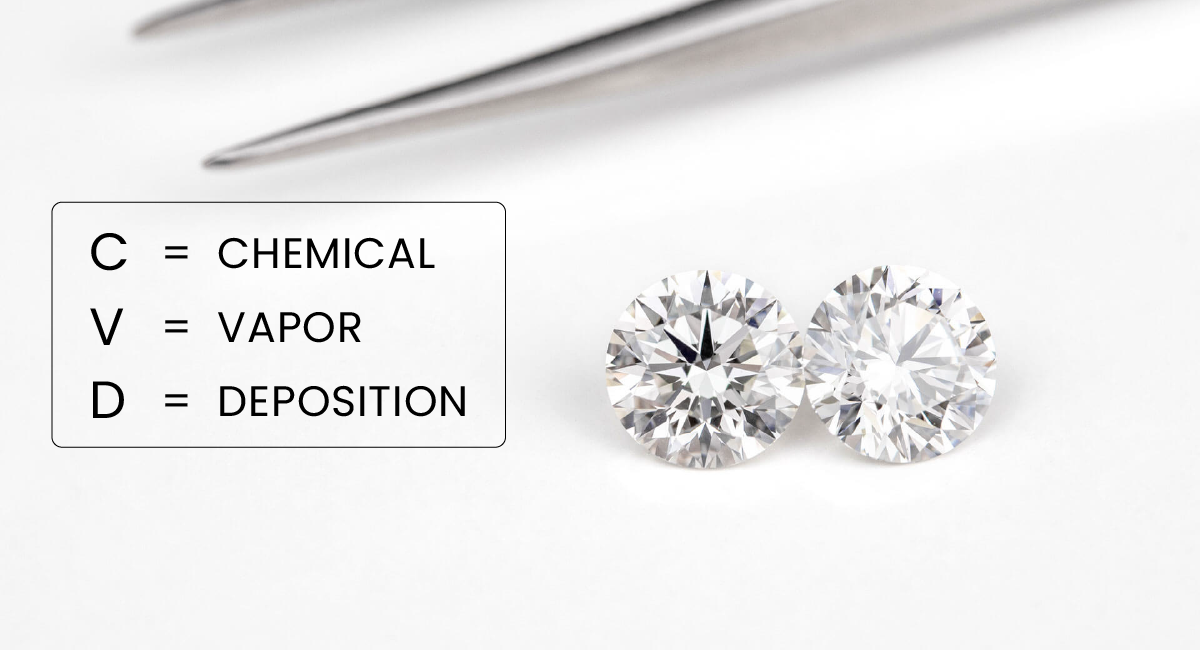CVD Diamonds: Unveiling the Gemological Marvels
In the dynamic landscape of gemology, the emergence of CVD (Chemical Vapor Deposition) diamonds marks a transformative chapter. As a gemologist, let's delve into the fascinating realm of CVD diamonds, exploring their unique properties, differences from natural diamonds, and the implications for the jewelry industry.

Formation and Properties: The Alchemy of Science
CVD Diamond Growth:
CVD diamonds are born through a meticulously controlled process that mimics the conditions under which natural diamonds form deep within the Earth. In a CVD chamber, a hydrocarbon gas is subjected to extreme heat and pressure, prompting carbon atoms to crystallize and form a diamond lattice.
Impurities and Color:
Gemologists scrutinize CVD diamonds for impurities and color variations. Nitrogen impurities, often present in natural diamonds, play a crucial role in determining a diamond's color. In CVD diamonds, the control over growth conditions allows for manipulation, resulting in a spectrum of colors from colorless to fancy colors.
Inclusions and Transparency:
CVD diamonds may exhibit different types of inclusions compared to natural diamonds. Gemologists distinguish between features like metallic inclusions, cloud-like formations, and growth striations that may differ from those found in diamonds formed in the Earth's mantle. Transparency variations also occur, influencing the overall appearance of the CVD diamond.
Distinguishing CVD Diamonds from Natural Diamonds: A Gemological Challenge
Spectroscopy and UV Light:
Gemologists employ advanced spectroscopy techniques to analyze CVD diamonds. UV light exposure may reveal characteristic fluorescence patterns and absorption spectra that differ from those of natural diamonds. Understanding these distinctions is vital for accurate identification.
Birefringence and Doubling:
CVD diamonds may exhibit birefringence and doubling of facet edges due to strain introduced during the growth process. This gemological phenomenon differs from the characteristics observed in natural diamonds, offering gemologists valuable clues for differentiation.
Lack of Natural Inclusions:
Unlike natural diamonds, CVD diamonds often lack the natural inclusions, such as mineral crystals or gas bubbles, that gemologists use as internal fingerprints for identification. This absence presents both a challenge and an opportunity for gemological assessment.
Applications and Industry Impact: Shaping the Future of Jewelry
Affordability and Accessibility:
CVD diamonds have disrupted the traditional diamond market by offering an affordable alternative to natural diamonds. Gemologists recognize their potential to make diamonds more accessible to a broader audience while posing questions about the ethical and environmental implications of their production.
Design Possibilities:
As a gemologist, I explore the design possibilities that CVD diamonds present. Their availability in various colors and shapes opens new avenues for creative jewelry designs. Understanding the unique properties of CVD diamonds allows gemologists to guide clients in making informed choices.
Ethical Considerations:
The ethical considerations surrounding CVD diamonds prompt gemologists to engage in conversations about transparency in the industry. Communicating the distinctions between CVD and natural diamonds helps consumers make ethically informed decisions.
In the ever-evolving world of gemology, CVD diamonds stand as a testament to the marriage of science and art. The gemologist's role is to navigate the complexities, distinguish the unique properties of CVD diamonds, and guide the industry toward a future where both natural and lab-grown gems coexist.
Do you want to learn more? Enlist JNCY Jewelers' bridal services to help you with the rest.








Leave a comment
All blog comments are checked prior to publishing